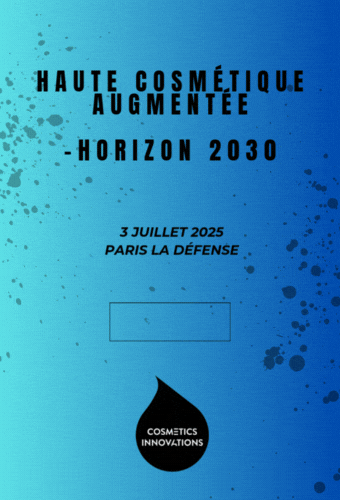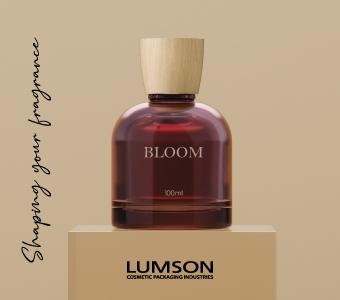On March 31, 2022, the China National Institutes for Food and Drug Control (NIFDC) released a draft of the Safety and Technical Standard for Cosmetics 2022 (hereinafter referred to as "draft STSC 2022") for public comments. The consultation will end on April 30, 2022. Stakeholders with any suggestions can fill out the feedback form and send it back by email to hzpbwh@nifdc.org.cn before that.
Along with the draft STSC 2022, the Revision Explanation and Revision Comparison Table of Safety and Technical Standards for Cosmetics 2022 (Draft for Comments) was also published.
Introduction of STSC
The Safety and Technical Standards for Cosmetics 2015 (hereinafter referred to as "STSC 2015"), based on the Cosmetics Hygiene Supervision Regulations issued in 1989, is the overarching technical standard for the safety supervision and testing of cosmetics in China. It specifies the general safety standards: prohibited / restricted / permitted ingredients, as well as cosmetic testing methods.
China NIFDC plans to introduce a more systematic and comprehensive version to supersede the existing 2015 version.
Comparison between STSC 2015 and the Draft STSC 2022
Compared with the 2015 version, the framework of the 2022 version remains basically unchanged. The draft STSC 2022 revises the content that is not suitable for the current supervision practice, retains the content that still applies, incorporates the previously approved revisions for STSC 2015 (they were issued as notifications), and standardizes and improves some terms and expressions.
The main revisions of each chapter are as follows:
Chapter 1 - Overview
– Revises and improves the terms and definitions of prohibited ingredients, sunscreens, hair dyes, rinse-off cosmetics, eye cosmetics, and safety risk substances.
– Adds general requirements for pH value of cosmetics, which shall be higher than 2.0 and lower than 11.5.
– Removes the remarks of the hazardous substance mercury. Once STSC 2022 takes effect, the limit value of mercury in eye cosmetics containing organic mercury preservatives shall also be less than 1 mg/kg, the same as the standard for other cosmetics.
Chapter 2 - Prohibited/Restricted Ingredients Used in Cosmetics
Chapter 3 - Permitted Ingredients Used in Cosmetics
– Adjusts the list of permitted ingredients used in cosmetics based on the Prohibited Inventories.
– Adds a new permitted preservative Ethyl Lauroyl Arginate HCL.
– Deletes mercury-containing preservatives, such as phenylmercuric salts (including borate) and thiomersal.
– Deletes the sunscreen agent 3-Benzylidene camphor.
– Adjusts “Galla Rhois Gallnut Extract” from the list of permitted colorants to the list of permitted hair dyes, and revises and improves its annotation.
– Deletes the permitted hair dyes "2-Chloro-p-phenylenediamine" and "2-Chloro-p-phenylenediamine sulfate", and add the permitted hair dye "Galla rhois gallnutextract or gallic acid."
– Standardizes some terms and corrects some expressions.
Chapter 4 - Physical and Chemical Test Methods
– Extends the application scope of physical and chemical testing methods from "the test for prohibited/restricted ingredients" to "the test for prohibited/restricted ingredients, preservatives, sunscreens, colorants, hair dyes, and other ingredients."
– Adds new test methods based on the previous revisions.
– Revises 15 test methods based on the previous revisions.
– Adds the Chinese name, CAS number, molecular formula, and molecular weight information of the standards in the appendix.
– Unifies the text format and style. For example, the Chinese and English names of the ingredients subject to test are standardized.
– Unifies the expression of detection limit, corrects some test methods, and adds reagent preparation methods.
Chapter 5 - Microbiological Test Methods
– Standardizes and revises the relevant terms, symbols, and characters of the methods with reference to the relevant national standards such as Chinese Pharmacopoeia (2020 Edition).
– Modifies some operation requirements of the Thermotolerant Coliform Bacteria Test, Staphylococcus Aureus Test, Pseudomonas Aeruginosa Test, and the Molds and Yeasts Count Test.
Chapter 6 - Toxicological Test Methods
– Based on the previous revisions, revises two test methods and adds eight new test methods (Transcutaneous Electrical Resistance Test (TER); Short Time Exposure In Vitro Test Method (STE); Local Lymph Node Assay:DA (LLNA:DA); Local Lymph Node Assay: BrdU-ELISA (LLNA:BrdU-ELISA); Direct Peptide Reactivity Assay (DPRA); In Vitro 3T3 NRU phototoxicity test; Skin Photoallergy Test; In Vitro Mammamlian Cells Micronucleus Test.
-Standardizes the text format, style, and sequencing of toxicological test methods.
– Standardizes product categories and dosage forms, such as changing "hair growth category" to "anti-hair loss category."
– Clarifies some test requirements, such as refining pre-test requirements, clarifying dosage design, data processing, and result judgment criteria.
Chapter 7 - Human Body Safety Test Method
– Clarifies that product safety evaluation should be completed with a written confirmation being issued before human body tests.
– Deletes the description of applicable product categories in the methods.
– According to the progress of medical research and the work experience of registration and notification testing, STSC 2022 adjusts and improves the selection and exclusion requirements of subjects and the sampling methods of different dosage forms of products.
Chapter 8 - Human Body Efficacy Evaluation Test Method
– Includes two test methods based on the previous revisions, namely Test Method for Efficacy Measurement of Skin Whitening Cosmetic Products and Test Method for Efficacy Measurement of Anti-hair Loss Cosmetic Products.
– With reference to the relevant ISO standards combined with the registration and notification requirements, STSC 2022 clarifies the requirements for the judgment principle for waterproof performance test results of sunscreen products.
|
ChemLinked Comments STSC 2022 gives greater consideration to the safety of ingredients and improves cosmetic test methods, aiming to be a more comprehensive and scientific technical reference. The introduction of STSC 2022 will not only affect the supervision of cosmetics under the new regulations but also directly concerns the research, development and production of cosmetics. Therefore, ChemLinked suggests stakeholders pay attention to the new standards and actively submit comments before the deadline. Reference Link: |
































